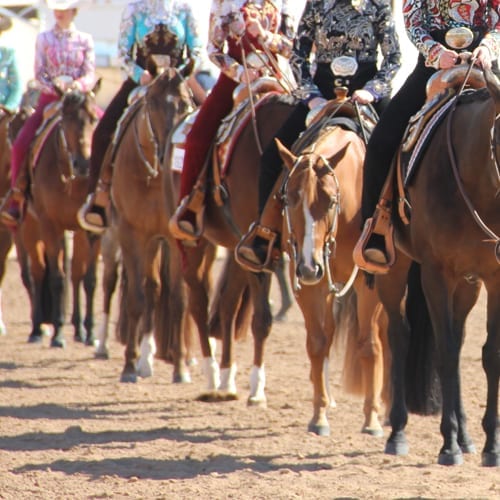There has been a constant debate over the years on whether loose reins in the equitation and horsemanship classes shows a higher degree of difficulty or whether it shows a lack of connection between the horse and rider.
Recently, a rule change was submitted to the AQHA English Subcommittee of the Show Committee to severely penalize anyone riding with excess reins in the hunt seat equitation. Number eight on the English Subcommittee Agenda states, “In hunt seat equitation – amateur and youth, lack of contact between the rider’s hand and bit will be ‘severely’ penalized. Any slack in the reins is not acceptable in this class.”
While the suggested rule change specifically refers to equitation, we wondered whether it was appropriate to also have loose reins in the horsemanship? We thought it would be a good topic to discuss before it is brought before the committee at the AQHA Convention held in March.
In the 2011 AQHA Rulebook regarding the hunt seat equitation, it states in rule–475B (d) 2 that, “Hands should be over and in front of horse’s withers, knuckles thirty degrees inside the vertical, hand slightly apart and making a straight line from horse’s mouth to rider’s elbow.”
In the horsemanship section of the rulebook, (474B (d)1a), explains that, “The reins should be adjusted so that the rider has light contact with the horse’s mouth, and at no time shall reins require more than a slight hand movement to control the horse. Excessively tight or loose reins will be penalized.”
After referring to the rule book, it may appear that excessive loose reins should be penalized; it is interesting that many riders still believe it gives them an advantage. Some believe that many of the riders who try to use extreme slack in the reins in the equitation and horsemanship do not have the experience, talent, or horse to ride their horse in this manner.
What do you think? Vote in our poll and express your opinions.
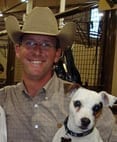 AQHA Trainer and Judge Robin Frid
AQHA Trainer and Judge Robin Frid
I do not penalize against loose reins in either the horsemanship and equitation. However it does take away from the overall picture in most cases. It does not hurt their score–however, it rarely helps it. We have to remember this is more of a hand class. I do not want to see a well oiled machine of a horse. I want to see communication between horse and rider. Frankly, I don’t think a new rule is needed. What one person may deem excessive may be acceptable to another. I would hate to see them take the judgment out of judging.
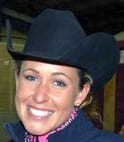 APHA Trainer Carly Veldman
APHA Trainer Carly Veldman
I think that slack in the reins in horsemanship and equitation should be penalized. Especially, in equitation–it is imperative that the rider has the horse on the bridle. The rider’s leg contact should push the horse in a forward motion into the bridle. In horsemanship, the rider’s contact can be lighter, but there still needs to be contact. However, I will also penalize too tight of a rein in horsemanship–which is clearly noticeable when horses are gaping at the mouth or trying to pull through the rider’s hands.
 Trainer Lisa Ligon
Trainer Lisa Ligon
Slack in reins for the equitation is a big no no to me. Especially if they are in a kimberwick or bit with a chain. I really feel like a hunt seat rider should be soft from leg to hand and be able to feel their horses face. I would rather see overbridled than slack. Horsemanship…. if you can go out there and nail a pattern on a death drape it increases the degree of difficulty for me, show off your horse, show off your trainer, show off yourself. However, you lose control like that, and I will kill you.
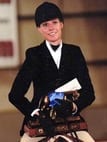 Trainer Stacy Huls
Trainer Stacy Huls
I’m not a huge fan of super loose reins in the equitation but not offended by a soft rein at all. We have had some hunt seat horses that have gone on to do the hunters, but they weren’t really bridle horses. They went with more of an indirect contact. For the horsemanship, I prefer a little more of a loose rein, but I would never count a bridle horse out. No matter the style, I just like to see a horse with a nice topline and its back up. I think it comes down to what horse performs the best no matter what style it might be.
 Trainer Michelle Tidwell
Trainer Michelle Tidwell
If you go by the rule book, then you should have light contact. But sometimes the ones with slack may be the best that day. If they have slack, then they better not move their hand. We have a couple of horses that do not like to be held, so I have shown on a little looser rein but not draped. The same for the equitation goes for me. I think that you can have a little loose rein but not too loose. I also do not like to see one that has too much contact, I think it needs to be light contact.
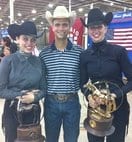 Trainer Brad Jewett
Trainer Brad Jewett
I think that in the equitation there should be no slack. It is an introductory class to hunter/jumpers. It would be considered unsafe to jump with slack in your reins. In horsemanship, I don’t think it should be penalized; but it doesn’t mean it gets extra credit either.
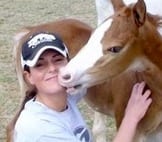 Trainer Erica Lang
Trainer Erica Lang
Loose reins have no place in the horsemanship or equitation. Loose reins not only make a sloppy appearance; they show the judge that the rider is unable to take a hold of the horse and guide him/her through the pattern. Loose reins have their place in the pleasure, trail, and western riding, but the pattern classes should show the judge that the rider is in control of the horse and the horse should sit in the bridle with rein contact.
 APHA and AQHA Judge Kelly Boles Chapman
APHA and AQHA Judge Kelly Boles Chapman
I don’t think it is at all appropriate to show with excessive slack in the reins in the equitation and horsemanship. I prefer to see light contact, and consider that the much more correct method to display one’s skills as a rider. However, as you know, it’s all a relative comparison in judging: it is not a credit-earning attribute by any means, and is a negative display of skill, and should be judged accordingly when evaluating the class.
 Trainer Kelley Roberts
Trainer Kelley Roberts
One of my biggest pet peeves is slack in the reins in equitation. I am constantly reminding riders that a sitting trot, galloping in two-point, leg yielding, etc all should be done with contact to the bit. It is collected and engaged and should be done with contact. I’ve had people say that they can’t shorten their reins because their horse just gets behind the bit even more. I tell them to work on riding their horse into the bit, not off the bit.
I don’t mind a little slack in the horsemanship, just not excessive. The patterns we are encountering now at shows have a lot more difficult maneuvers in them. For example rollbacks, galloping circles with speed and multiple spins. I think if you have too much rein throughout the pattern. It doesn’t look as sharp.
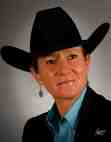 AQHA Judge Janette Steffl
AQHA Judge Janette Steffl
In
equitation; it is an absolute no-no. English riding has no slack in the
reins, always light contact. A horse will not place well under me if I
see a lot of slack in the reins. In horsemanship, a little slack doesn’t
bother me but a lot of slack does. A horse is better controlled and
guided with light contact. The rule books state that in horsemanship
there should be light contact. It’s also much better for the rider
because if the horse wants to deviate from the pattern in any way, it is
much more easily controlled with light contact and can be corrected
with much less guiding from the rider.
What do you think? Please take our poll and let us know what you think.


